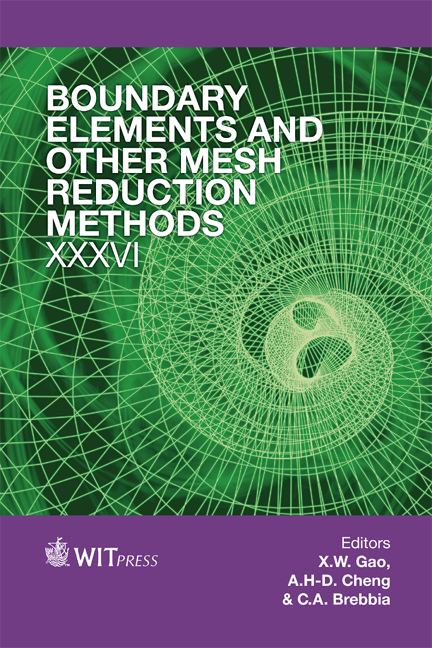Solution Of Stress Intensity Factors For 2-D Multiple Crack Problems By The Fast Multipole Boundary Element Method
Price
Free (open access)
Transaction
Volume
56
Pages
13
Page Range
417 - 429
Published
2014
Size
682 kb
Paper DOI
10.2495/BEM360341
Copyright
WIT Press
Author(s)
Zhao Guo, Yijun Liu & Hang Ma
Abstract
The fast multipole boundary element method (BEM) based on both singular and hypersingular boundary integral equations (BIEs) for 2-D elasticity is applied to study 2-D multiple crack problems in this work. For multiple crack problems, the degrees of freedom (DOFs) and the size of the matrices can increase quickly as the number of cracks increases, which prohibits the use of the conventional BEM. In this study, constant line elements are used to discretize the crack surfaces and other boundaries. There is no use of the special quarter-point elements at crack tips in the present approach. To account for the need for accuracy, a relatively larger number of constant elements is required on the surfaces of cracks. By applying the fast multipole BEM, the increased computational work can be dealt with readily on desktop PCs. Results of the computed stress intensity factors using crack opening displacements (CODs) near the crack tips are presented in this paper. It is found that the fast multipole BEM with constant elements can predict the stress intensity factors of cracks in 2-D plates with sufficient accuracy and efficiency. Keywords: fast multipole boundary element method, 2-D crack problems, constant boundary elements, stress intensity factors.
Keywords
fast multipole boundary element method, 2-D crack problems, constant boundary elements, stress intensity factors





